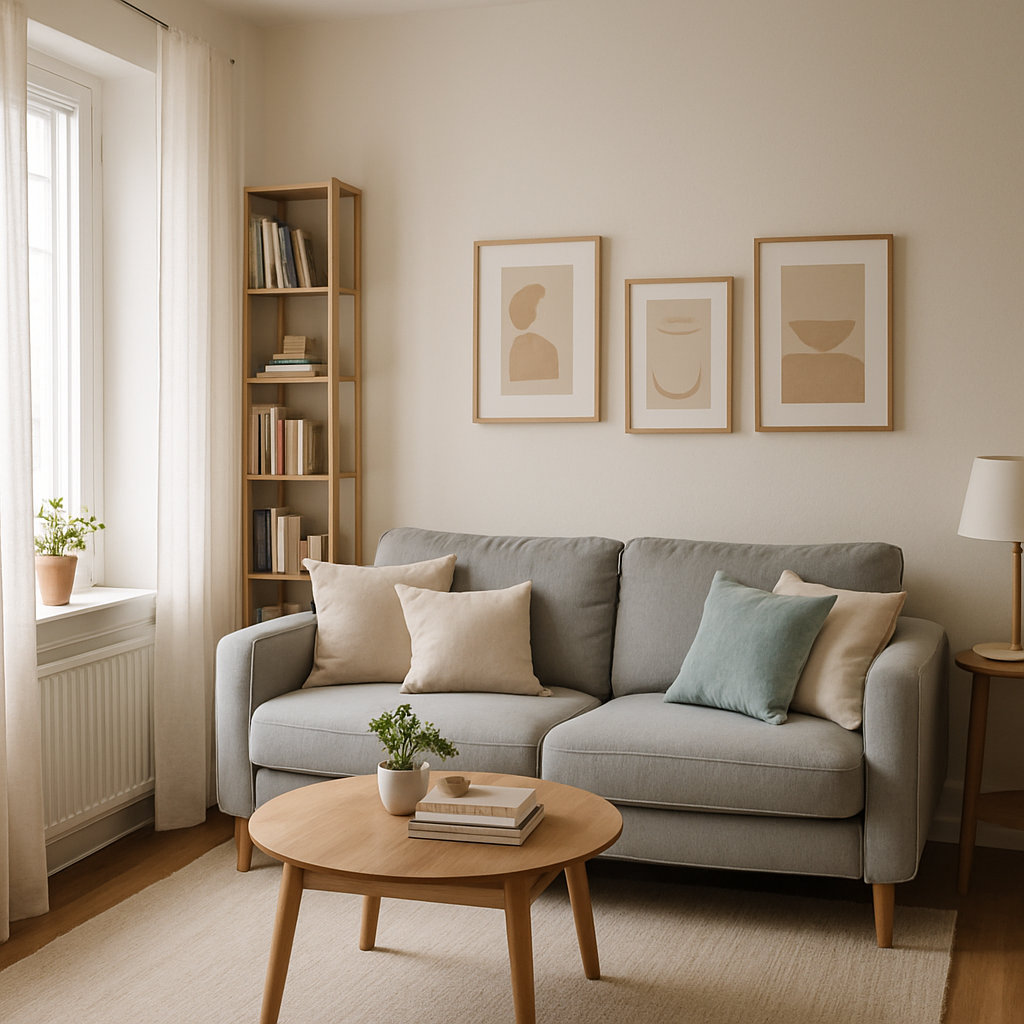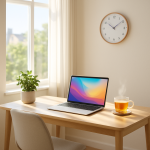
Living large in a small space isn’t just possible it’s an art form that combines creativity, practicality, and personal style. Whether you’re dealing with a tiny apartment, a compact studio, or simply a small room that needs reimagining, the challenge of making the most of limited square footage can actually spark incredible design solutions.
Small spaces have their advantages. They’re easier to clean, they force us to be intentional about what we own, and they can feel incredibly cozy when designed thoughtfully. The trick lies in seeing limitations as opportunities rather than obstacles.
I’ve spent years transforming my own 480-square-foot apartment into what friends call “the TARDIS” seemingly bigger on the inside than the outside. Through trial, error, and a healthy obsession with space-saving furniture, I’ve learned that small spaces can be just as functional and beautiful as their larger counterparts.
The Magic of Multifunctional Furniture
The cornerstone of small space design is furniture that works twice as hard as you do. Think beyond the obvious folding table or sofa bed today’s market offers ingenious solutions that transform with minimal effort.
My personal game-changer was a wall bed (sometimes called a Murphy bed) with an integrated desk. During the day, I have a full workspace; at night, it converts to a comfortable queen bed without having to clear the desk the whole unit simply rotates as the bed comes down. Companies like Resource Furniture specialize in these transforming pieces, though more affordable options exist at IKEA and other retailers.
Storage ottomans serve triple duty as seating, storage, and occasional tables. Nesting tables can spread out when you have guests and tuck away when not needed. Extendable dining tables accommodate occasional dinner parties without dominating your space daily.
A client of mine living in a 350-square-foot studio in Chicago invested in a sofa with a chaise section that lifts to reveal significant storage space. She stores her seasonal clothing there, eliminating the need for an additional dresser. The piece cost more than a basic sofa, but saved money in the long run by reducing the need for separate storage solutions.
When selecting multifunctional pieces, prioritize quality over quantity. A well-made transforming piece will outlast several cheaper alternatives and function smoothly for years. Look for solid construction, smooth mechanisms, and materials appropriate for frequent use.
Visual Tricks That Expand Space
How we perceive space often matters more than actual square footage. Several design techniques can make rooms feel significantly larger:
Light colors generally make spaces feel more open, but that doesn’t mean you’re limited to white walls. Soft blues, greens, and grays can expand space while adding personality. The key is maintaining similar tones throughout to create flow.
Mirrors work wonders in small spaces. A large mirror opposite a window doubles natural light and creates the illusion of another room beyond. I placed a floor-to-ceiling mirror along one wall of my narrow hallway, and visitors often comment on how much larger the space feels.
Consider scale carefully. Conventional wisdom suggests small furniture for small rooms, but sometimes one larger statement piece works better than several small items that create visual clutter. A full-sized sectional might actually work better than two small loveseats, provided it’s properly scaled to the room.
Vertical space is your friend. Draw the eye upward with tall bookshelves, vertical striped patterns, or ceiling treatments. I installed simple floating shelves that run along the perimeter of my living room, just 12 inches below the ceiling. They store books and display plants without taking up precious floor space, while drawing attention to my apartment’s 9-foot ceilings.
Transparent furniture like acrylic chairs or glass tables takes up less visual space than solid pieces. My glass coffee table makes my living area feel more spacious than the wooden one I had previously, even though they’re identical in size.
Lighting dramatically affects how we perceive space. Avoid relying solely on one overhead light, which can make a room feel flat and small. Instead, incorporate multiple light sources at different heights floor lamps, table lamps, wall sconces, and string lights all add dimension.
Smart Storage Solutions
Small spaces demand ruthless organization. Every item needs a designated home, and ideally, that home should be out of sight when not in use.
Look for “dead spaces” that could be put to work. The area under beds can hold seasonal clothing in vacuum-sealed bags. The space above kitchen cabinets can store rarely-used appliances. The back of doors can hold hooks for robes, bags, or accessories.
Built-ins maximize efficiency. If you’re able to make permanent changes, consider built-in bookshelves around doorways, window seats with storage underneath, or customized closet systems that use every available inch.
When I renovated my bathroom, I had a cabinet built into the wall between studs it’s only 4 inches deep but provides storage for all my toiletries without protruding into the room. Similarly, recessed medicine cabinets offer storage without taking up precious bathroom space.
Divide larger spaces into zones using furniture arrangement, area rugs, or different lighting schemes. This creates the feeling of distinct areas without actual walls. In my combination living/dining area, a bookshelf serves as a room divider while providing storage on both sides.
Don’t forget about digital clutter. Scanning important documents rather than keeping paper copies can eliminate the need for a filing cabinet. Services like Spotify and Netflix reduce physical media storage needs.
A friend who lives in a tiny New York apartment installed a pegboard wall in her kitchen, inspired by Julia Child’s famous kitchen. The pegboard holds pots, pans, utensils, and even small shelves for spices. Everything is visible and accessible while taking up zero counter or cabinet space.
Wall-mounted solutions free up floor space. Floating desks, wall-mounted TVs, swing-arm lamps, and fold-down tables all contribute to an airier feel. Even wall-mounted drying racks for laundry can be folded away when not needed.
Remember that negative space is valuable too. Resist the urge to fill every surface some breathing room helps a small space feel intentional rather than cramped.
Making It Personal
A common mistake in small space design is sacrificing personality for functionality. Your space should still reflect who you are, regardless of its size.
Art makes a tremendous difference. A single large piece can become a focal point that distracts from the room’s dimensions. Gallery walls can add interest without requiring much floor space.
Plants bring life to small spaces. Hanging planters, wall-mounted options, or tall, slender plants like snake plants maximize greenery while minimizing footprint. My collection of pothos plants trails along shelves and walls, adding visual interest at various heights without taking up valuable surface area.
Color doesn’t have to be limited to walls. Textiles like throw pillows, rugs, and curtains add personality and can be changed seasonally or as your tastes evolve.
Consider your specific needs when designing your space. A cookbook collector might prioritize kitchen storage, while someone who works from home needs a proper workspace. I’m an avid reader, so I incorporated bookshelves throughout my apartment rather than relegating books to just one area.
Texture adds dimension without bulk. Mix materials like wood, metal, glass, and textiles to create visual interest. In my bedroom, I combined a brass bed frame, wooden nightstands, linen bedding, and a wool rug the variety of textures makes the small room feel rich and layered.
Small spaces can feel even more personal than large ones because every element must be chosen with intention. This curatorial approach often results in spaces that perfectly reflect their inhabitants.
Living in a small space means making tough decisions about what to keep and what to let go. But this constraint often leads to more thoughtful, personalized environments than sprawling homes where items can accumulate without notice.
The most successful small spaces balance practicality with personality, creating environments that function efficiently while still feeling like home. They prove that square footage is just a number it’s what you do with it that counts.
With creativity, planning, and a willingness to think beyond conventional solutions, any small space can become a stylish sanctuary that feels just right for the people who live there. The best small spaces don’t just accommodate life they enhance it, proving that sometimes less really is more.

